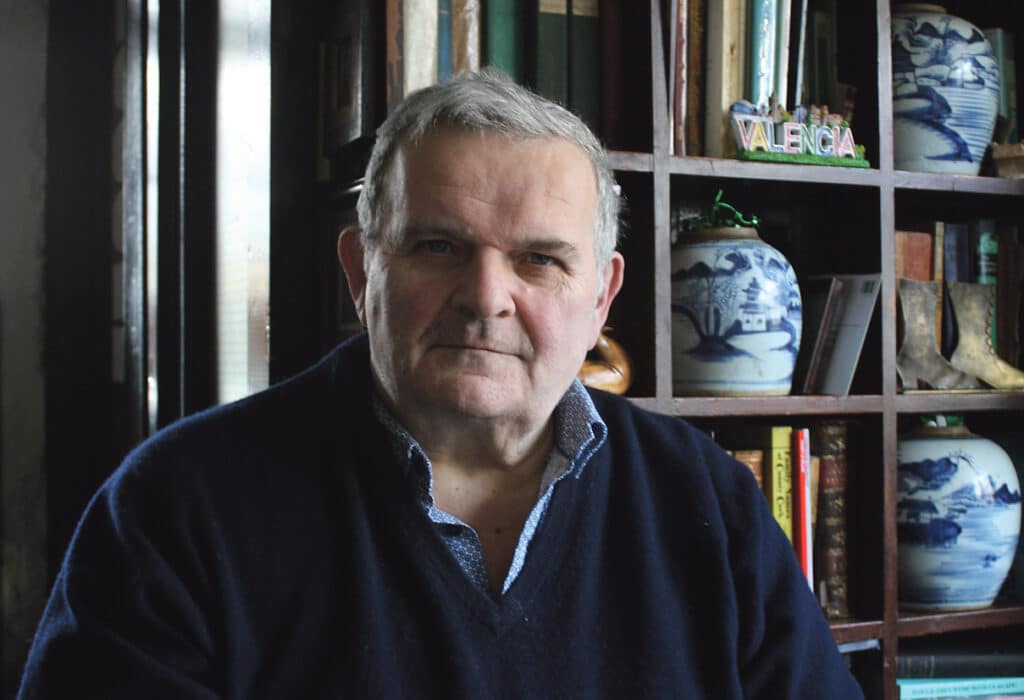
The DNA of West Cork People
Mark Grace is a genetic genealogist and family historian at Ballynoe House, Ardfield, Co. Cork
As a family historian and genetic genealogist, I work both in the public and private domain. For some of my advanced projects I produce detailed reports or research papers which are shared privately amongst those who have collaborated and contributed their DNA to the study. I tend to update these once every couple of years, whenever I have more data and revisions to make. All are living projects and will never end.
These documents are usually in the form of PDF files and include historical context, descriptions, family trees, stories, DNA analysis, informed speculation about solved and unresolved family mysteries, location maps, diagrams, and photos. Some have been running for so long and have so many contributors that they are reaching 100 pages. For those participating there is an understanding on sharing such information that connects us for the benefit of the group, within the group. This sounds fine. But is it?
When in the clear public domain, such as writing newspaper articles or magazine features and making presentations, it is important to limit the narrative so as not to include living people. On rare occasions living people are included, but it is only with their express permission and it is usually only to help present a specific point of research for a case history or advertise their interest more widely to potentially like-minded researchers.
More of us are publishing online using personal blogs about our family history and DNA research, perhaps printing off booklets or hardbacks that are limited editions of family histories for private circulation. My West Cork People column is just one example of ways to connect with others with the same interests.
It is a fact that whenever you share online or through a printed document, or even send an email or file to one other person you are no longer in control of that information and it is effectively no longer private. Once issued you do not how that information may be passed on and used. There is no such thing as ‘for private circulation only’.
In accepting of that fact, in all forms of publishing it is considered an essential courtesy to contact anyone you may be mentioning in any document or publication who is living to ensure they are content that they are included or the facts are correct. If not, you should not include them. A newspaper normally reaches out to individuals and invites them to ‘comment’. It can be a major task to seek all the approvals you need and is an aspect of historical research that is often forgotten, which is why it is so much easier to wind up your narrative before reaching the living and potentially running into legal issues by disclosing things you should not.
As part of the EU and in publishing in Ireland we need to be aware of GDPR. This directive ensures people’s right to privacy. In the definition of ‘personal data’ it means “any information relating to an identified or identifiable natural person (‘data subject’); an identifiable natural person is one who can be identified, directly or indirectly, in particular by reference to an identifier such as a name, an identification number, location data, an online identifier.”
Simply put, if your historical narrative and family description starts to include the names of living people and where they live, you risk contravening GDPR and perhaps having your publication withdrawn if there is a legal objection by someone who had not agreed to be included or facing legal redress. You are OK, for example, to say that the now deceased Mr and Mrs Sullivan lived in Clonakilty and had three children, but you would be crossing the line if you mentioned the names of their living children or mentioned that their son ‘John’ and his wife ‘Mary’ were currently living in a particular village nearby or other identifying information.
From my personal perspective, I would not usually decline being mentioned in research or publications, as long as I was able to receive a pre-issue copy to ensure it was factually correct and I was happy with what was written with regard to both the historical narrative and my data protection. It is to my advantage to be included where I have expertise to offer. In many cases, my own body of research would have something to contribute and I am always willing to collaborate, review, be cited or provide insights based on my 45 years of experience. You just need to bear in mind not everyone likes to have their histories made public.
I have received some detailed and fascinating information about certain family lines that are ‘for my eyes only’ and cannot be included in my wider, more public, research. However, they are a useful independent verification for research I am doing and can be mentioned in very loose terms.
I very much welcome finding other research that has connected to me or my family members, but I always question what efforts the author or their researchers went to obtain my express permission first before going public. I encourage the publication of historical research because it is for the benefit of all, but it needs to be done in a considered way.
Treating everyone’s information confidentially and sensitively is a key starting point. All we can ask is that we all handle with care and hope recipients of this information do the same. Going public is not entirely without risk but I would encourage you to document your own family history.
Questions for future articles or private client services can be emailed to DNAmatchingprojects@gmail.com. Follow the West Cork DNA projects on Facebook ‘My Irish Genealogy & DNA’.


